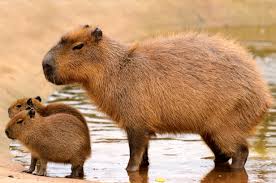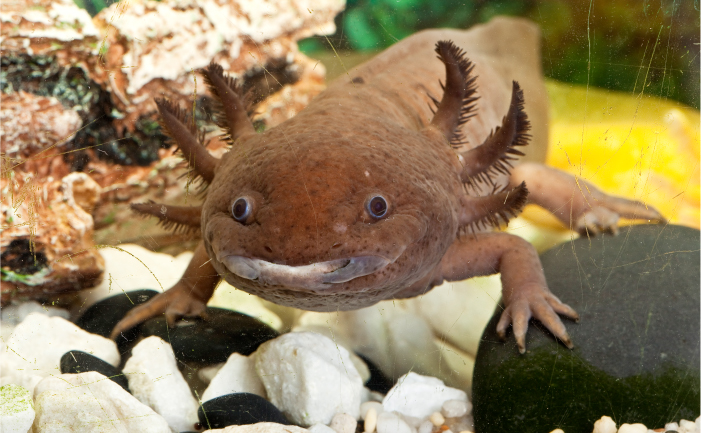Somehow, it’s May already! Where is this year going?
Now that we’re here, did you know the first week in May is National Pet Week?
As a veterinary practice, we commonly see cats and dogs at McDowall Vets, with occasional visits from birds, guinea pigs and rats. Don’t get us wrong – you know we LOVE all of these pets, but sometimes we do get a little jealous of all those other wacky and wonderful pets that people have. For something a little different, we thought we’d showcase some of those wacky pets from around the world!
Firstly, why don’t we delve into the world of rodents.
Now, I’m sure most people shudder when thinking of ‘rodents’… Who could love those horrid little rats and mice that make their homes in the back shed and eat everything they can, right?
Wrong! Rats and mice actually make wonderful, loving little pets, and they’re much cleaner than they’re given credit for. That being said, don’t try and pull the ones from your garden and make them your pet – that probably won’t work out so well! Rats and mice aren’t the only rodents available as pets either! Guinea pigs are also a common pet, and one that Dr. Victoria LOVES to see!
Once you head outside of Australia and think of rodents, the capybara comes into play. Capybaras are the largest living rodent in the world (weighing up to 65 kilograms) and are native to South America. They are a semi-aquatic animal, living in densely-wooded areas alongside lakes or rivers (particularly the Amazon river), and are extremely sociable creatures, so do better living with at least two other capybaras – they much prefer to live in groups of up to forty though! Much like guinea pigs, capybaras are herbivores whose teeth grow continuously, needing to be worn down by their constant grazing. Capybaras can be a challenging pet, but they are generally known for being loving and sweet.
Capybara https://www.rainforest-alliance.org/species/capybara
After rodents, you’d probably think we’d touch on reptiles… So, let’s talk about amphibians first!
Guess what – frogs are not the only amphibians out there! It’s also not really recommended to take a frog from the wild and make it your pet. There’s a lot more to their care than you realise.
So, what else could possibly be an amphibian? Salamanders and the axolotl, of course!
Salamanders encompass approximately 400-500 species of amphibians, all of which have tails. Because of their slender bodies and long tails, salamanders are often confused with lizards (which are reptiles). The most common salamander kept as a pet is the axolotl.
The Axolotl, while a type of salamander, does not undergo metamorphosis from the larval stage (with gills) to the adult form, hence remaining an aquatic amphibian their whole life. Native to Mexico, Axolotls are commonly referred to as a ‘walking fish’, due to their four legs and fish-like tail; they have the ability to regrow limbs and certain organs if lost or damaged. They are a hardy creature and can live for up to 15 years. Axolotls are carnivorous, but have tiny teeth, made for neither biting nor tearing, requiring the axolotl to swallow their food whole. Axolotls can be a challenging pet, with very sensitive skin (not scales) and a grotesque look that “only a mother could love”, but they can also bring a lot of joy.
Axolotls https://www.burkesbackyard.com.au/fact-sheets/pets/pet-road-tests/others/axolotls/
Now we can talk about reptiles! Don’t worry – I didn’t forget them! Snakes and lizards – what’s not to love?
I’ve had a bit to do with both as I grew up. My dad is a snake handler (as well as a general wildlife carer) so we’ve had plenty of snakes through our doors over the years; my sister was adamant, even as a 4-year-old, that she wanted a lizard “the size of mum’s foot” so she could name it ‘Puff the Magic Dragon’. Luckily, Santa delivered the goods that year, and she’s never looked back!
Of the bearded dragons, there are many species and a variety of colours; the dragon of choice for my sister is the Central (or inland) bearded dragon. The central bearded dragon (like its other species) relies on bluff rather than bite – they try to appear larger and spikier to predators than they really are. When alarmed, the lizard will face a predator with mouth wide open and beard puffed out to make the jaw appear larger. The dragon also inhales air rapidly to expand the body, making the spiked sides of the animal appear rigid, and the overall size seem greater. They can also undergo rapid colour change; mature males often change the colour of the beard from the normal colouration to black, so when puffed up, the beard appears more striking.
These omnivorous lizards feed on vegetation including fruit and leaves in the wild, as well as any invertebrates (including ants and beetles) and small vertebrates (such as lizards) that they can catch. Their habitats include temperate to tropical arid to semi-arid woodland, shrub-land, and hummock grassland.
The central bearded dragon is protected in Australia and cannot be collected from the wild; a permit is required in most states and territories to keep this species in captivity. While relatively easy to care for, the care of the bearded dragons can be dangerous to those who do not understand them. A bite from an adult dragon can cause pain, break the skin and leave a bruise. Avoiding a bite is not difficult though, as the dragon will puff, hiss and run away before resorting to biting. Generally, they are a placid pet to keep with a personality all of their own.
 My sisters’ current bearded dragon, “Gwendolyn”.
My sisters’ current bearded dragon, “Gwendolyn”.
Being from tropical Far North Queensland, and originally working in a mixed-breed practice, I’m sure I’d cop some flack from the guys back home if I didn’t talk about the farm-type animals that make great pets too!
‘Farm-type’ – which means cows, horses and sheep, right? What about pigs, goats, alpaca, chooks, ducks… the list goes on!
Alpaca are a popular pet, especially so in Peru where it is thought that 90% of the world’s alpaca population resides. Alpaca are of the camelid species, and are similar to (and often confused with) the llama. They can live for 15-20 years, weigh up to 70kg, and reach a height of 1 metre (at the shoulder). Alpaca have a gestational period of 335 days (11 months) and give birth to young usually weighing 6-8kg. Did you know that when an alpaca gives birth it’s called ‘unpacking’?
Alpaca are cheap to own, requiring little food other than grass and hay, and they can help create a profit for families. Many alpacas in Peru are used for their fibre, which makes wool similar to sheep’s, but is hypoallergenic and flame-resistant. Alpaca are also used as herd guards, protecting sheep from wild dogs.
Alpaca can be just as cuddly and pet-friendly as dogs, and can be trained rather easily. If you don’t believe me, look up Pisco, the alpaca who was trained to surf!
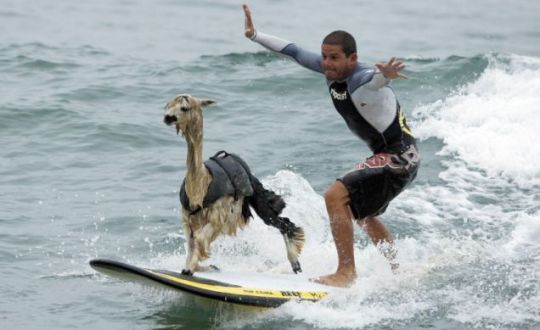 Pisco, the surfing Alpaca https://metro.co.uk/2010/03/17/pisco-probably-the-worlds-first-surfing-alpaca-174036/
Pisco, the surfing Alpaca https://metro.co.uk/2010/03/17/pisco-probably-the-worlds-first-surfing-alpaca-174036/
Last, but certainly not least, come the insects and arachnids. Have you ever bought a bug-catcher? Did you ever want to have a butterfly (or a spider) as a pet? Some of these guys can make great pets too!
Insects and spiders can be fascinating to watch. They are (generally) extremely quiet, clean pets that do not need much room to live. They also require little attention or socialisation – in fact, most generally do best with little interaction at all. While being unique pets, and not overly demanding in their care, as an owner you must give the same level of commitment to caring for them as you would any other pet.
The Madagascar Hissing Cockroach is a popular pet overseas, and is generally described as hardy, docile and easy to handle, despite its fearsome name. Their easy-going nature makes them well suited to beginners in the world of insects. This cockroach grows up to 3 inches (7.62cm) in length, and can live for up to 5 years. They’re also well suited to beginners as they are non-venomous and not known to bite.
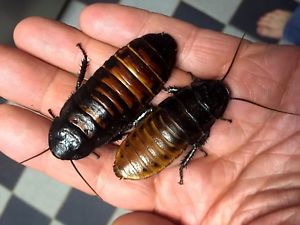 The Madagascar Hissing Cockroach https://www.pinterest.com.au/pin/241224123765567681/?lp=true
The Madagascar Hissing Cockroach https://www.pinterest.com.au/pin/241224123765567681/?lp=true
Also a common pet overseas, are species of tarantula, particularly the Chilean Rose tarantula and the Costa Rican Zebra tarantula. These tarantulas are recommended for beginner and intermediate carers, respectively.
The Chilean Rose tarantula has a reputation of being calm and submissive, however they can be quite moody. When handled often, these tarantulas can become aggressive or fussy, and will usually raise their front legs to warn their carer of a potential bite. They also have spine-like hairs on their abdomen that contain mild venom. Thankfully, being only mild venom, it tends to only cause an irritating rash on human skin.
This arachnid has a leg-span of 4.5 to 5.5 inches (roughly 11.5cm to 14cm). Male tarantulas of most species have a lifespan on up to 5 years, while females can live for up to 20 years; this does vary slightly between species, however not by very much.
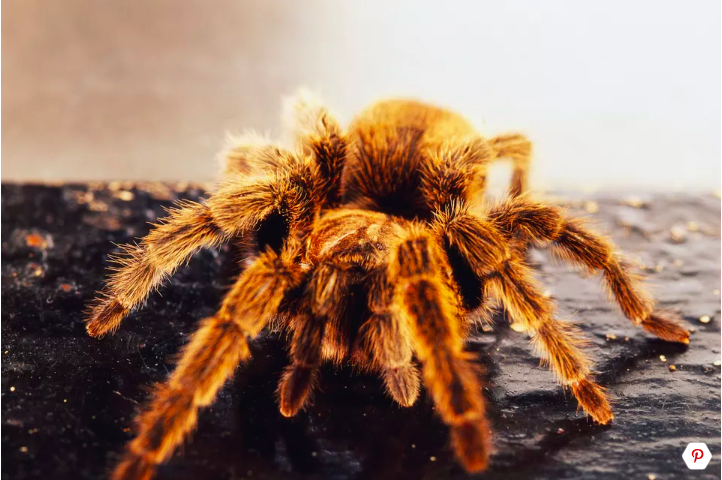 The Chilean Rose Tarantula https://www.thesprucepets.com/pet-chilean-rose-tarantulas-1237348
The Chilean Rose Tarantula https://www.thesprucepets.com/pet-chilean-rose-tarantulas-1237348
Within this category, there are many different options, so if cockroaches and spiders haven’t scared you off, have a quick Google search and see what else you can find! Don’t forget the stick insects, praying mantis, millipedes and scorpions.
After talking about these different pets, don’t you just want to run out and get some of them yourself? I know I do! (Not spiders though… They’re a definite ‘no’ from me!)
Before you do that, however, don’t forget to look into which animals require a licence for you to own them! Most reptiles, some arachnids and some bird species DO require you to hold a licence or permit (as well as purpose-built enclosures) for you to be allowed to purchase them, let alone have them as pets. You’ll also need to have a look at local and state laws to make sure you can legally own them here as well; for example, rabbits and ferrets are illegal in Queensland (and pack a whopping fine if you are found to have them)!
For those of you who do decide to get a weird and wacky new pet, we cannot wait to meet them! (Except spiders… Please let me know in advance, as I won’t be available to nurse that day!)
Alex

